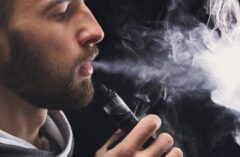Table of Contents
- 1 PMTA Explained
- 2 Substantial Equivalence
- 3 Health Risk Investigations – PTMA
- 4 Literature Review – PMTA
- 5 For each study your submission include…
- 6 Components, Ingredients, Additives, Properties, and Operation
- 7 Proposed Labeling – PMTA
- 8 Bottom Line of the PMTA Nonsense
- 9 The FDA’s Deadly E-Cigarette Regulations
Last Updated on December 23, 2019 by Team Spinfuel
This PMTA business is long… and to be honest, bureaucratic nonsense.
PMTA Explained
The PMTA (Premarket Tobacco Application), is now required for all ENDS and e-juices not on the market before February 2007. Keep in mind there was no e-juice, tanks, or batteries over 180mAh before 2007.
Substantial Equivalence
A substantially equivalent tobacco product has been found by FDA to either have the same characteristics as a predicate tobacco product; or has different characteristics than the predicate tobacco product but the information submitted demonstrates that the new product does not raise different questions of public health.
A predicate tobacco product is one that was commercially marketed in the United States (other than in a test market) as of Feb. 15, 2007, or a product previously found to be substantially equivalent by FDA and in compliance with the requirements of the Food Drug & Cosmetic Act (FD&C Act).
If the new product raises different questions of public health, the product is not substantially equivalent. However, a tobacco product that is modified by adding or deleting a tobacco additive, or increasing or decreasing the quantity of an existing tobacco additive, may be considered for exemption from demonstrating substantial equivalence.
Exemption of Substantial Equivalence (can only be applied for by the originating manufacturer). Which means that China manufacturers are the only ones that can ask for exemption. (no manufacturers in U.S. in 2007)
A tobacco product that is modified by adding or deleting a tobacco additive, or increasing or decreasing the quantity of an existing tobacco additive, may be considered for exemption from demonstrating substantial equivalence if:
- The product is a modification of another tobacco product and the modification is minor
- The modifications are to a tobacco product that may be legally marketed under the FD&C Act
- A Substantial Equivalence Report is not necessary to ensure that permitting the tobacco product to be marketed would be appropriate for the protection of public health
- The modified tobacco product is marketed by the same organization as the original product
- An exemption is otherwise appropriate
Now that you have the facts, the e-cigarette manufacturers that are still making the cig-a-like, will have it easier that everyone else. This process is far cheaper than having to submit a PMTA.
PTMA Process
Now we will discuss the PMTA process as simply as I can. It gets really involved and very difficult to wrap your head around. But the retailers don’t need to know how to submit and deal with the FDA We just have to wait and see which products and manufacturers get through it. Only the richest will survive.
The PMTA requires manufacturers to submit a list of ingredients in all their products. I use the word SKU, to define each product. So if you manufacture 1 flavor of ejuice at 4 levels or nicotine, each ejuice level is considered a SKU. If you manufacturer 2 flavors, then each flavor at each level is a SKU. So the first scenario you would have 4 SKU’s to be submitted. In the later you would have 16 SKUs. So now imagine your e-juice company that has 50 flavors at 4 nicotine levels. That equals 200 items that must be submitted.
Next,
Not only do they have to report the ingredients but also health impacts studies.
Health Risk Investigations – PTMA
Full reports of all information….
- supportive, non-supportive, or adverse.
- both clinical and non-clinical.
- assessing…Constituents.
- Consumer exposure and use profiles.
- Novel components.
- both within and outside the U.S
Literature Review – PMTA
- Provide an explanation of the scope of the literature review you conducted to discover relevant published studies
- Provide a bibliography of all published studies
- For each published study, include an abstract
For each study your submission include…
- a summary of the results
- Description of the study’s objective
- Description of the study’s design
- Description of any statistical analysis plan
- Brief description of the findings and conclusions
- reasonably obtainable documentation
- All actions taken to ensure reliability and protection of human subjects
- Original study protocols
- Investigator instructions
- Statistical analysis plan
- All raw data
- All versions of questionnaires
- All versions of case report forms
- All informed consent forms
- Full report of the findings
Components, Ingredients, Additives, Properties, and Operation
- Complete list of components, ingredients, and additives
- …by quantity
- …with applicable specifications of each
- …with a description of the intended function of each
- Full narrative description of the product’s features
- …form, dimensions, construction…
- …design features….
- …tobacco blending, reconstitution, or manipulation…
- …performance criteria…
- …differences from similar products…
- …established shelf life.
- Full narrative description of how consumers will use and operate the product
- …how a consumer will use the product…
- …how a consumer will operate the product…
- …how long it takes to consume a single unit…
- …how the product’s heat source functions.
910(b)(1)(C). An application shall contain:
“a full description of the methods used in, and the facilities and controls used for, the manufacture, processing, and, where relevant, packing and installation of the new tobacco product.”
- A listing of all…
- …manufacturing, packing, and control sites
- A narrative description, list, and summary of all…
- …standard operating procedures (SOPs)
- Examples of relevant forms and records…
- …for the categories of information listed in the draft guidance.
Examples of relevant forms and records you can include…
- Manufacturing and production activities
- Personnel oversight and training
- Processes and controls for design and changes
- Supplier activities
- Validation and verification activities
- Pre-release testing procedures
- Complaints, nonconformance
- Corrective and preventative actions
Compliance with Standards
910(b)(1)(D). Identify any tobacco product standard under section 907 of the FD&C Act that would be applicable to your new tobacco product, and provide adequate information that either shows that your new tobacco product fully meets the tobacco product standard or justifies any deviation from that standard
Samples and Components
910(b)(1)(E). An application shall contain:
“samples of [your] tobacco product and of components thereof as the Secretary may reasonably require
Samples and Components
Provide samples…
- …of both finished product and components
- …and a sufficient number of both
Provide summaries…
- …of the results of any tests you performed on the lots(s) represented by the submitted samples.
Proposed Labeling
910(b)(1)(F). Include specimens of all proposed labeling for your new tobacco product
Proposed Labeling – PMTA
Labeling is defined in section 201(m) of the FD&C Act as, “all labels and other written, printed, or graphic matter (1) upon any article or any of its containers or wrappers, or (2) accompanying such article,” and includes labels, inserts/onserts, instructions, and other accompanying information or materials.
Bottom Line of the PMTA Nonsense
And basically that is the application. What and how the FDA makes it determination is another article all together and it’s way too involved to put up. If you want that info you will need to go to the FDA website a research itself. I don’t think it’s necessary at this time to bore you with bureaucratic bulls***.
Wendy Bivona
Wendy Bivona is also a vape retailer. Wendy is the owner of Premium eCigs, in Melbourne Florida. Follow Wendy on Facebook. Wendy is the most informed advocate on the pro-vaping side, and she will be bringing Spinfuel Readers and Vape Shop Owners vital information for Life after August 8th.
———————————————–
The FDA’s Deadly E-Cigarette Regulations
The agency’s new rules threaten products that offer a much safer alternative to smoking.
Jacob Sullum | May 11, 2016
Each application is expected to cost $1 million or more, and a separate application is required for every product variation. That requirement will be fatal for thousands of vape shops across the country that offer a wide variety of custom-made e-liquids in different flavors and nicotine strengths.
The regulations also doom businesses that let customers assemble their own vaporizers by choosing batteries, tanks, and heating elements, because the FDA wants information on how every possible combination interacts with every possible e-liquid. Similarly, the FDA wants to know how every e-liquid interacts with every vaping system, and it expects applicants to compare the health risks posed by their products to those posed not only by cigarettes, which are indisputably much more dangerous, but by “similar products in the same category” and by “never using tobacco products.”
Even the few companies that can afford to file applications may not be able to persuade the FDA that their products should stay on the market. In making that judgment, the agency will take into account “the risks and benefits to the population as a whole,” including not just smokers who switch to vaping but nonsmokers and former smokers who try it, like it, and eventually switch to the real thing.
The FDA says “valid scientific evidence other than controlled studies,” such as “well-designed laboratory testing,” might be acceptable, and new research might not be necessary if “there is an established body of evidence regarding the public health impact of the product.” But it also says “nonclinical studies alone are generally not sufficient to support a determination that marketing of the product is appropriate for the protection of the public health.”
In a vaping industry that includes at least 186 manufacturers and 14 importers as well as 4,250 vape shops mixing their own fluids, only the largest businesses can hope to meet the FDA’s demands. Even if some fraction of the industry survives, the regulations will dramatically reduce competition and consumer choice, raise prices, and deter innovation.








